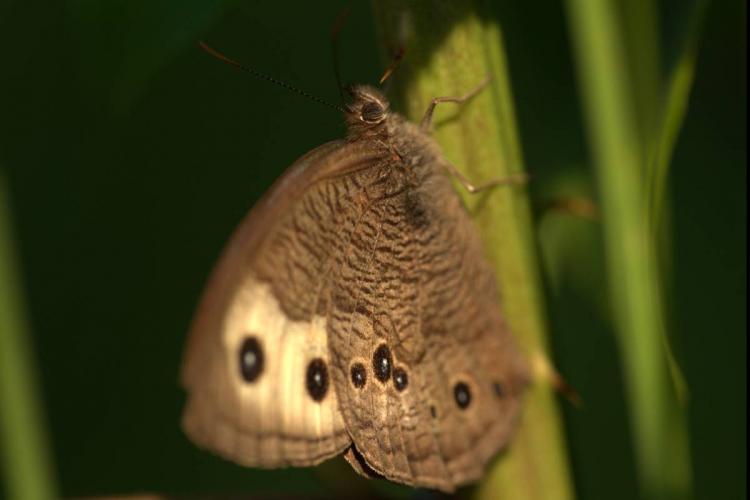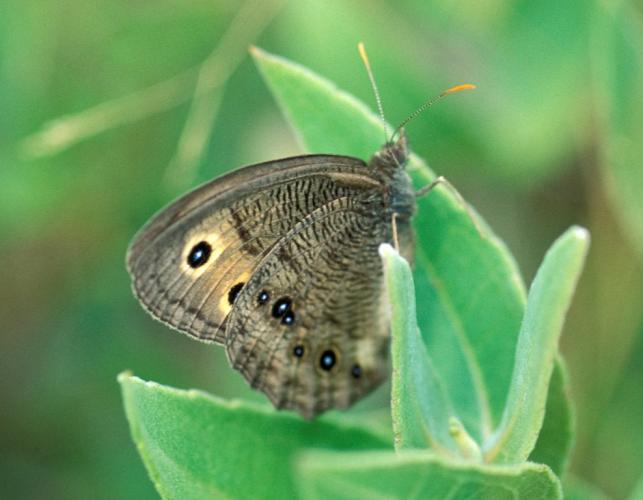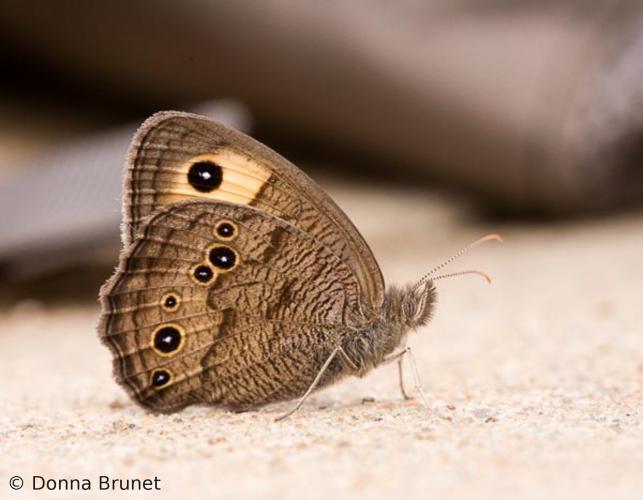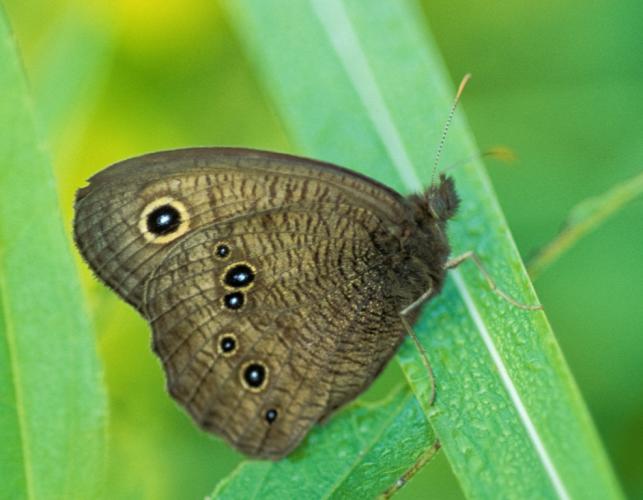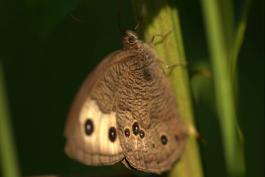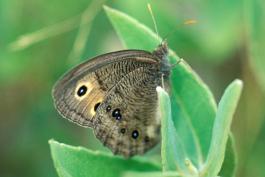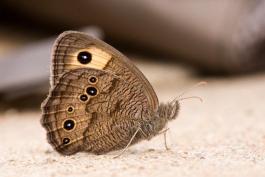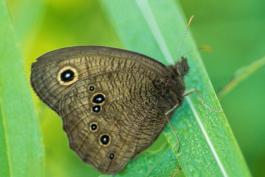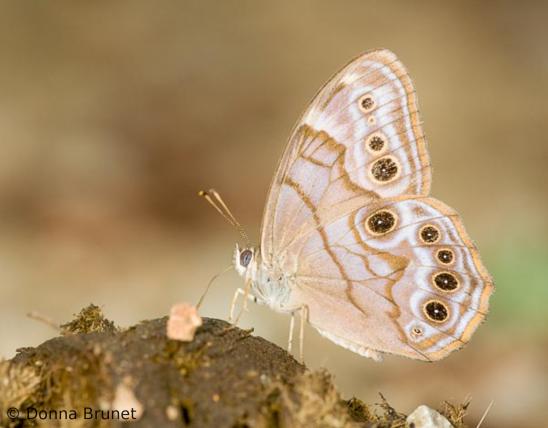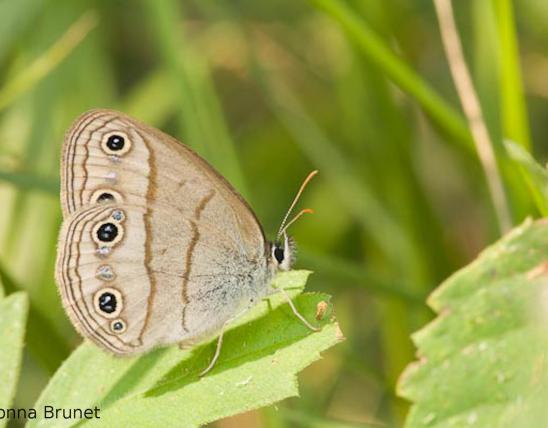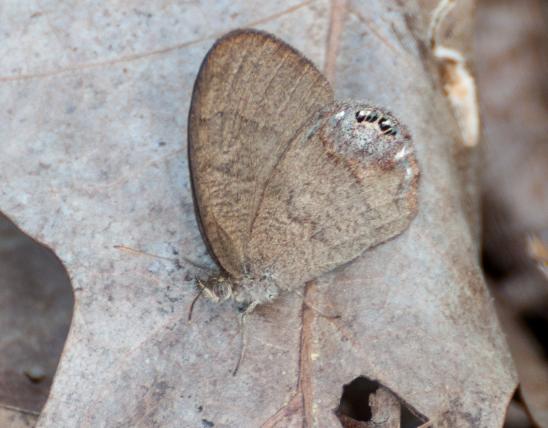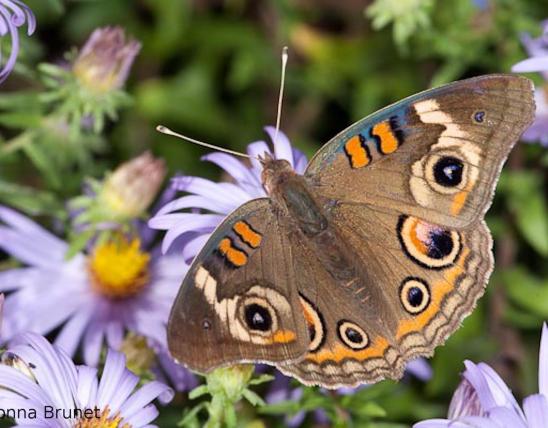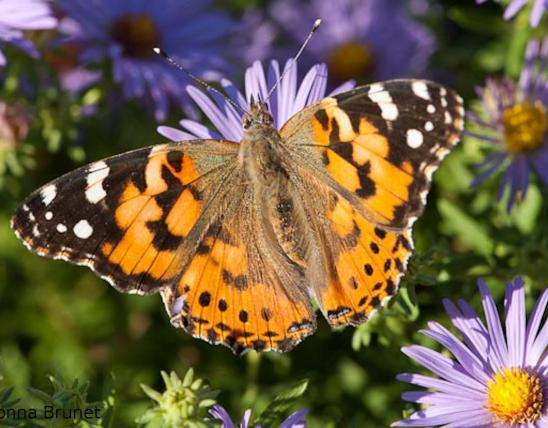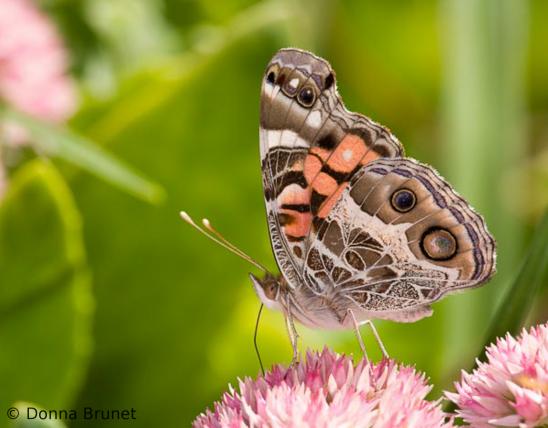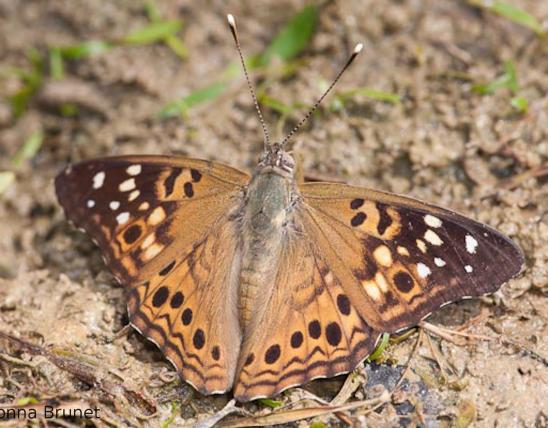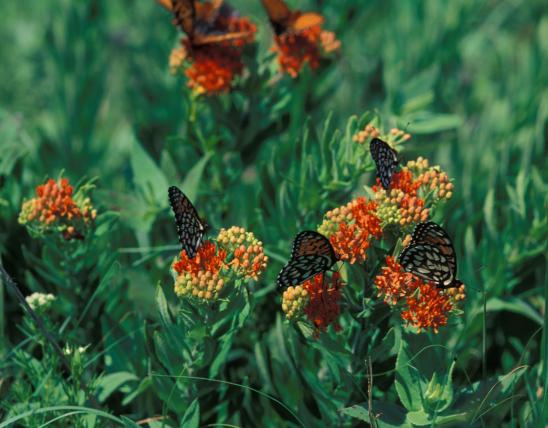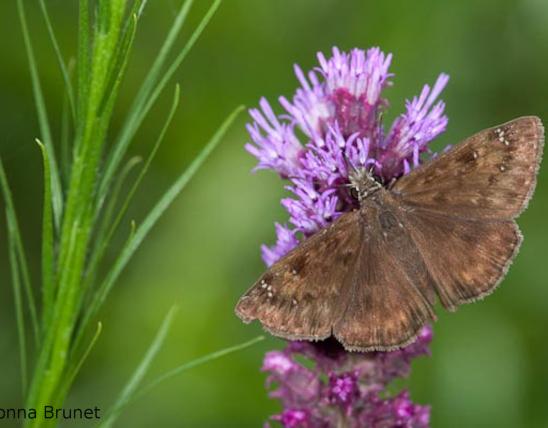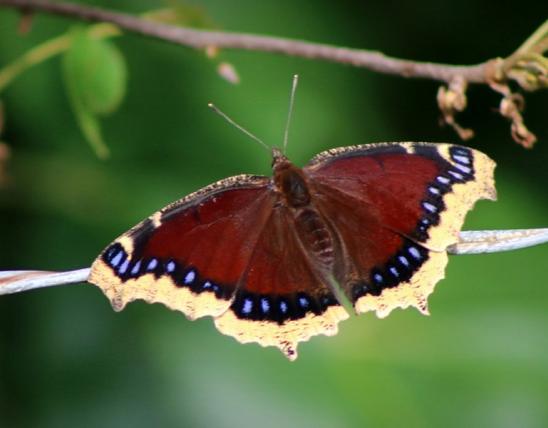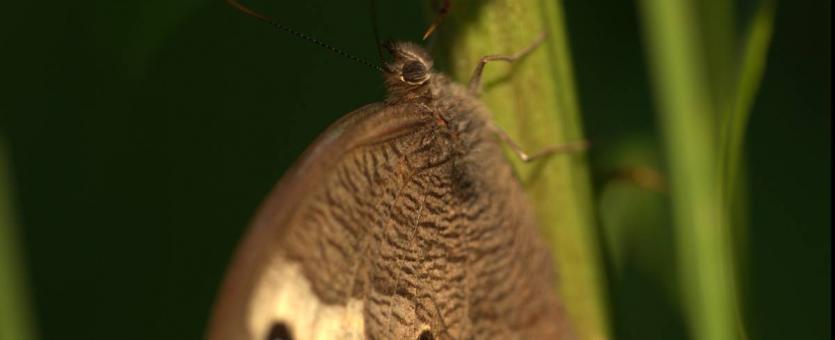
The overall color of adult common wood nymphs is tannish or grayish brown. The hindwing underside usually has a row of eyespots, but these spots may be missing or fewer in number in some individuals, particularly in the Ozarks.
Common wood nymphs have a variable appearance based on region. Some individuals are easily recognized by a yellow area on the forewing containing two eyespots; in our state, these have been called the western Missouri form. Males in the Salem Uplift form, found in the Ozarks, may have only one small eyespot in the yellow patch. In northern Missouri, the yellow area is often reduced to a yellow circle around each eyespot.
Caterpillars are covered with tiny hairs and are green with two narrow, yellowish lateral stripes along each side. A pair of small, pointed horns at the hind end are tinged with red or pink.
Wingspan: 1¾–2¾ inches.
Common resident in northern and western Missouri; becoming very local in the Ozarks and apparently absent from the Mississippi Lowlands.
Habitat and Conservation
Adults fly from June into October in prairies, fields, and open woodland edges throughout the state. They typically rest on grasses, low shrubs, and sometimes tree trunks.
Food
Grasses (in the family Poaceae) constitute the larval host plants. Adults may visit flowers, but they prefer tree sap and decaying fruit.
Life Cycle
There is just one brood, which has a long flight period, June–October. Males emerge about a week before females and live up to three weeks as adults, while females can live several months after emerging. Mating occurs early in the season, but females do not lay eggs until late in the flight season. Females lay eggs singly on grass leaves. Caterpillars hatch and overwinter without feeding. Young caterpillars may benefit by not being subjected to hot, dry summer weather.
Human Connections
People worldwide have admired the beauty of butterflies. Butterflies appear in paintings, sculpture, jewelry, photography, literature, and song. The dried butterflies themselves are often used decoratively.
Globally, humans have attributed spiritual, mythological, and superstitious significance to butterflies. A number of cultures have viewed butterflies as a symbol for the human soul, rebirth, or transformation. They have also been viewed as bad omens.
Ecosystem Connections
In nature, survival and reproduction are paramount activities. The compound eyes of butterflies provide them with a nearly 360 degree field of vision, helping them to evade predators (and also making them hard for humans to sneak up on). Most butterflies have color vision and can also see ultraviolet and infrared light. Seeing a wide color spectrum helps them to find food and host plants (survival) and identify mates (reproduction).
The eyespots on wood nymphs, their close relatives the satyrs, and many other butterflies and moths can function to misdirect predators. Often eyespots are positioned on the outer margins of butterfly wings. A predator, such as a bird, that pecks at the eyespots may destroy a bit of wing edge, but from the butterfly’s perspective, that is a much smaller loss than the butterfly’s real head would be.
